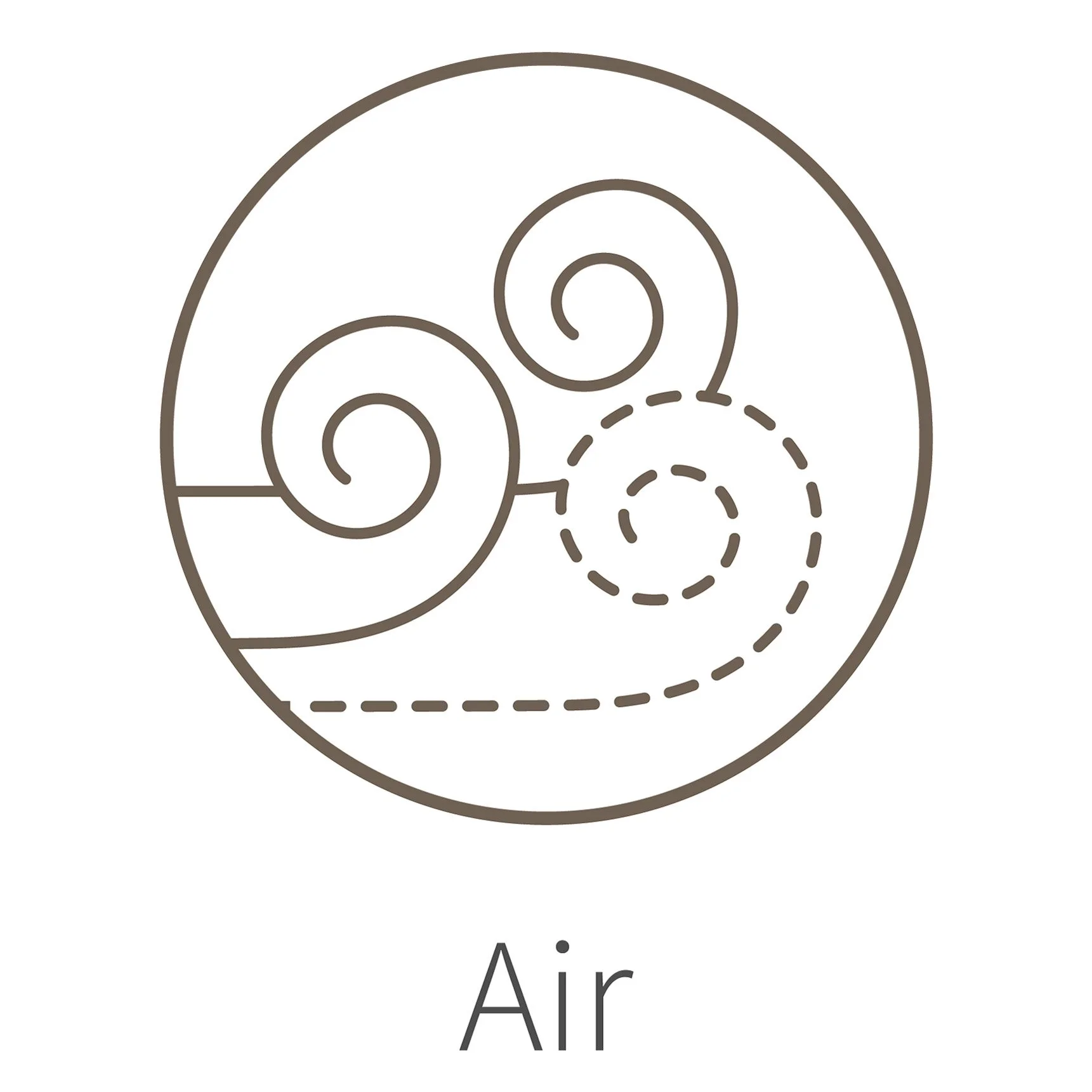
Ayurveda – A Complete Approach to Life
Ayurveda is not only a health system – it is a complete approach to life. It teaches that human beings are a reflection of the universe and guided by the same natural principles. Ayurveda embraces all dimensions of existence, from the subtle and intangible to the most physical expressions in the body.
Over 10,000 years ago, the first civilization in the Indus Valley brought forth Vedic culture and profound sciences. Among them was Ayurveda, acknowledged as the world’s first system of health. For thousands of years it was passed down orally, before being written in Sanskrit texts more than 5,000 years ago.
Ayurveda – The Knowledge of Life and Longevity
The word Ayurveda comes from Sanskrit, the language of the Vedic scriptures:
Ayur – life, vitality, longevity
Veda – knowledge, wisdom
Together, they mean Knowledge of Life.
Relevant Longevity – Adding Life to Years and Years to Life
Ayurveda is not about adding years at any cost. Its vision is relevant longevity: living as many years as possible in health, vitality, and joy. In Ayurveda, the length of life (life span) and the quality of life (health span) should be one and the same.
Swastha – Established in Your True Self
Ayurveda aims for every person to be swastha – established in their true self. Each individual’s inner nature or Prakriti is unique, like a personal blueprint. At the heart of Ayurveda lies the journey of self-understanding: to ask, Who am I? Who am I truly meant to be? What is my potential – beyond what my environment and experiences have shaped me into?
Ayurveda recognizes that health and fulfillment come from living in alignment with this inner nature. It also sees the intimate interplay of body, mind, soul, behavior, and environment – each influencing and shaping the other.
Prakriti – Honoring Your Unique Nature
Every person is born with a unique constitution called Prakriti. Like a fingerprint, it defines our physical, mental, and emotional tendencies. By knowing and living in alignment with this constitution, we can maintain health, happiness, and fulfillment.
Losing touch with this uniqueness, on the other hand, is the root cause of imbalance and suffering. Ayurveda helps us observe ourselves, recognize what supports us, and live in a way that honors our individuality.
Healing by Addressing the Root Cause
Ayurveda explains every imbalance or disease through cause and effect. True healing is only possible when the root cause of disease is addressed.
This is why Ayurveda offers individualized treatment – through diet, daily routines, lifestyle guidance, herbs, and therapies – always aiming at the source of imbalance.
The Guiding Principles of Ayurveda
Ayurveda offers precise guidance for achieving relevant longevity. Rooted in universal laws that mirror the workings of nature, it is a logical and timeless science.
Cause and effect (Law of Karma)
Every symptom or disease has a cause. Lasting healing is possible only when the cause is identified and removed.
Like increases like
Similar qualities reinforce each other. Dryness, for example, worsens with dry food or a dry climate.
Opposites reduce
Counter-qualities restore equilibrium – like cooling cucumber on a hot summer day.
Because nature functions by the same principles everywhere, Ayurveda is timeless, global, and adaptable to every context.
Key Concepts of Ayurveda
Five Categories of Matter
Ayurveda recognizes that human life is an integral part of nature.
Ayurveda teaches that human life is inseparably linked to nature. The same intelligence that orchestrates the cosmos also governs every process within us. These guiding principles, known as mahabhutas or cosmic elements, form the foundation of creation. They give rise to the five categories of matter, commonly described as:
The universe is composed of five states of matter, brought to life through their interaction. From these arise the three Doshas: Vata (air and ether), Pitta (fire and water), and Kapha (earth and water). All manifestations contain the five elements, yet it is the Doshas that act as the intelligence enabling these elements to work together as a living organism.
The three Doshas
One of Ayurveda’s most powerful tools is the concept of the three Doshas. They arise from the dynamic interplay of the five categories of matter that make up all physical creation.
The Doshas act like intelligent managers — each with distinct responsibilities — working together to direct and coordinate every process in human physiology. They orchestrate and sustain all functions of body and mind.
-
VATA
Movement, Transport
Communication
Separation
Elimination
Sluggishness
Deconstruction

-
PITTA
Digestion, Metabolism
Transformation of Awareness
Transformation of Intelligence
Transformation of Thoughts
Transformation of Food

-
KAPHA
Structure, Cohesion
Growth
Endurance
Reconstruction
Lubrication

The three Doshas are like intelligent managers. They not only coordinate every physical process in the body but also regulate mental and emotional states. Most functions arise from their interplay.
In the nervous system, for example:
Vata governs movement — of thoughts, feelings, emotions, sensations, and perceptions.
Pitta appears in the gray matter through certain neurotransmitters, responsible for knowledge, comprehension, understanding, and compassion. It transforms sensations into emotions and insights.
Kapha provides structure through the gray matter and surrounds the brain with a subtle layer of white matter, where every sensory impression is recorded. Vata carries the impressions, Kapha provides the medium, and Pitta is the ink that imprints the experience.
Without this cooperation, there would be no human life.
Ayurveda is therefore a functional health system. The Doshas are the intelligent forces that connect the five states of matter and make them work together. In their natural state they create equilibrium — homeostasis. When symptoms or disease appear, it means that something in this network of relationships has gone out of balance. This is a different perspective from Western medicine, which primarily views the body through form, structure, and organs.
Factors influencing the Doshas
• Diet
• Lifestyle and daily routines
• Cycles of day and night, seasons, and stages of life
• Climate and environment
• Mental patterns, experiences, and trauma
In truth, almost everything can affect the Doshas. Life itself is one of the main causes of imbalance, since the entire universe has the potential to disturb them.
The Doshas carry a demanding responsibility. Each must perform its own tasks while cooperating with the others. Together, they must maintain internal homeostasis—an ever-shifting balance—while constantly adjusting to external change. And they do this tirelessly, day and night, without pause.
Prakriti and Vikriti – True Nature and Status Quo
Every human being has all three Doshas in a unique combination, known as Prakriti – the natural constitution fixed from birth. It serves as a blueprint for health and resilience.
Life circumstances, however, can disturb this balance. The resulting state of imbalance is called Vikriti. Ayurveda’s strength lies in its individualized approach: advice and treatment are tailored to each person’s constitution and current imbalance. Healing means guiding Vikriti back toward Prakriti – restoring the natural state of balance.
Returning to Your True Nature
Ayurveda helps us reconnect with our natural state through personalized diets, seasonal adjustments, daily routines, herbs, and therapies. The journey back to Prakriti is the journey to swastha – a life of balance, vitality, and relevant longevity.






